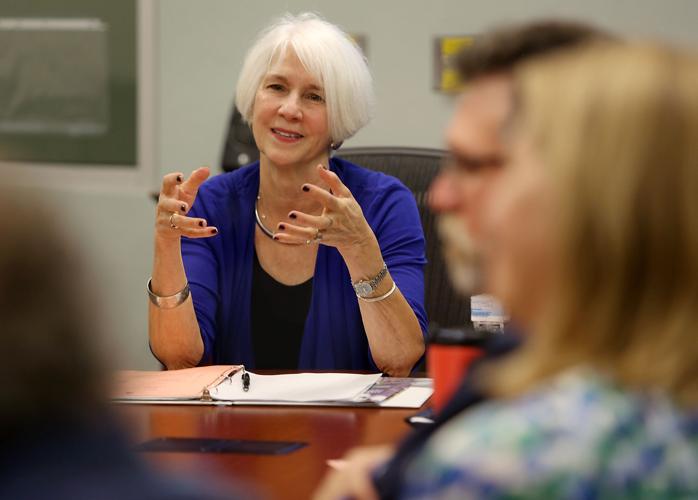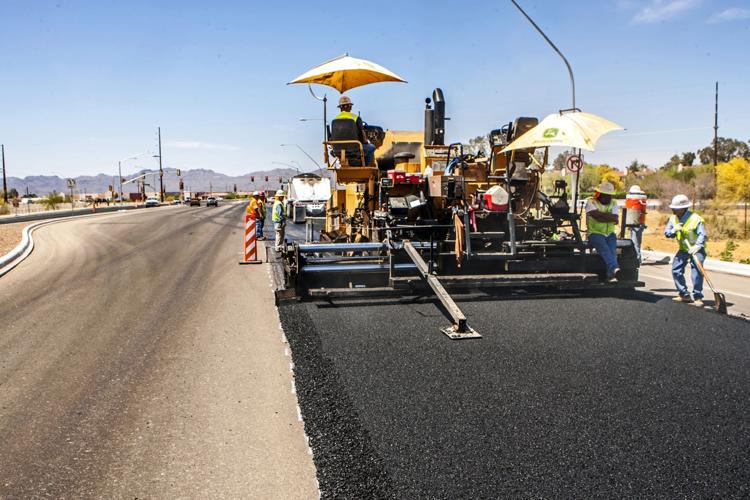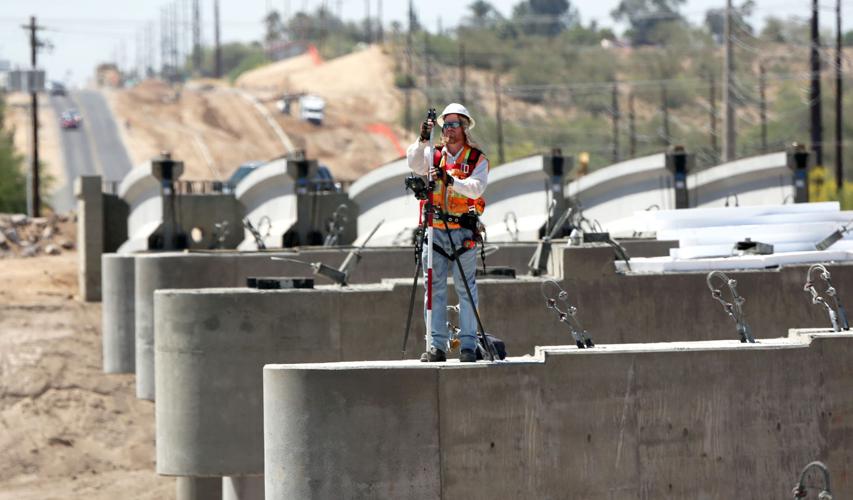Priscilla Cornelio, the outgoing head of the Pima County Transportation Department, has been at the helm for 12 very interesting years in regional transportation history.
Her tenure has largely overlapped with the first decade of the taxpayer-approved Regional Transportation Authority, which has funded significant road projects in unincorporated Pima County and other jurisdictions.
That’s on top of construction funded by the 1997 HURF bonds. But while road capacity has expanded significantly, conditions have deteriorated apace. The most recent figures put the percentage of unincorporated county streets in poor or failed condition at roughly 64 percent.
Cornelio sat down with the Road Runner for an exit interview of sorts to look back at her time as director and what’s ahead for county roads.
RR: How does it feel to be fast approaching retirement?
PC: It’s very bittersweet. I’ve been lucky, and I’ve worked all these years, and I like driving around the region and seeing things I was a part of, but it definitely is time to go off into the sunset. I have some grandkids and I want to do some volunteer work, like at St. Cyril’s Elementary, the food bank. I might end up as a playground monitor.
RR: Or a crosswalk monitor?
PC: Yeah, I have the orange jackets.
RR: What are some of the accomplishments you are most proud of as director?
PC: One of the things I’m proudest of, we transformed the whole northwest side of town. With the money we had from the RTA, we rebuilt all of the roads. We had the support of the board of supervisors as we went through and widened the roads. What we had done, you had roads that were closed, and I’ll say Overton and La Cholla, that would close three or four times a year for two, three days at a time whenever we would have rain. We had roads that always flooded in the northwest side, and we now have pedestrian facilities and drainage facilities, bicycle facilities and drainage facilities. Last Friday I drove all around the northwest side, to get one last time looking at all our projects, and we just had a big rain just a day or two before, and there was no damage. You can sort of see, all the improvements to the roads that we did up there worked.
RR: What was the biggest challenge that you faced as director?
PC: When we had the Great Recession, and our Highway User Revenues Funds just decreased significantly. And that’s what hurt us, because I think right away we lost $2-$3 million a year, and we barely held it together, for our roads. And that’s where some of our roads got into very, very bad shape. That was a very difficult time. I know (County Administrator Chuck Huckelberry) has been constantly asking the Legislature to give us more funds. For example, for 20 years we haven’t had any increase in the gas tax. That’s the hardest thing. When I look and see over 60 percent of the roads in Pima County are in poor or failed condition. That’s a bad thing for a department of transportation director to be saying.
RR: What are the major factors behind the poor condition of many county roads?
PC: It was absolutely the funding, the lack thereof. We got some funds, general funds from the county, very minimal amounts over the years. But the biggest thing is, as I said, what we lost with the highway user revenues. I am just now getting the amount of funds that we got 10 years ago, but our costs have gone up unbelievably and our revenues have stayed static. It’s sad for me to drive around and to look at the condition of some of our roads. We can patch up all the potholes, but a patch will never, ever replace a brand new road. It’s always a patch.
RR: Looking back, is there anything that your department or the county could have done differently to avoid at least some of the road condition problem?
PC: I will say that the county administrator was almost like a lone voice in the wilderness, constantly saying we need more monies. We did about everything that we could to bring attention. We tried, and we couldn’t just get any momentum to address the issue.
The biggest issue that we faced in the beginning of my career, the issue with Pima County was roadway capacity. I was having a great old time. I love building roads. We couldn’t go fast enough, to design the roads, buy the right of way, and interact with the public to deliver those projects. And then when the money kind of stopped, with highway user revenue funds decreasing, now I’ll admit we didn’t pay the attention taking care of our roads when we were in growth mode. That’s why now some of our roads in bad shape.
It’s unfortunate when we would get complaints from neighborhoods. They would say, ‘our roads are in very bad shape.’ And we’d have to admit, ‘yes they’re in bad shape.’ But we didn’t have the money. We only had money to fill potholes, we didn’t have money to repave a roadway.
Now I’m really pleased, which is another reason it’s bittersweet leaving, because we have monies now with the new property road tax. Finally, at last, we have money for our local roads, which are in the worst condition. I wish I could be a part of that.
Down the road
No start date has been given but Pima County has approved a contract for a $19 million project that will reconstruct and widen West Cortaro Farms Road between North Camino de Oeste and Thornydale Road. The project will widen the road from two to four lanes and includes curbed medians, storm drainage, retaining walls, noise walls, traffic signals and native vegetation landscaping.
A public meeting to kick off the construction plan is scheduled for 6 to 7:30 p.m. Sept. 13 at Quail Run Elementary School, 4600 W. Cortaro Farms Road. The open house will include a short presentation followed by time for questions.
Cortaro Farms Road is currently one of the alternate routes while work is being done on the nearby West Ina Road/Interstate 10 interchange project. Pima County plans to keep one lane open in each direction on Cortaro Farms during construction. The county said delaying the Cortaro Farms work until after the Ina interchange is complete was not an option as the county risked losing funding for the project.






